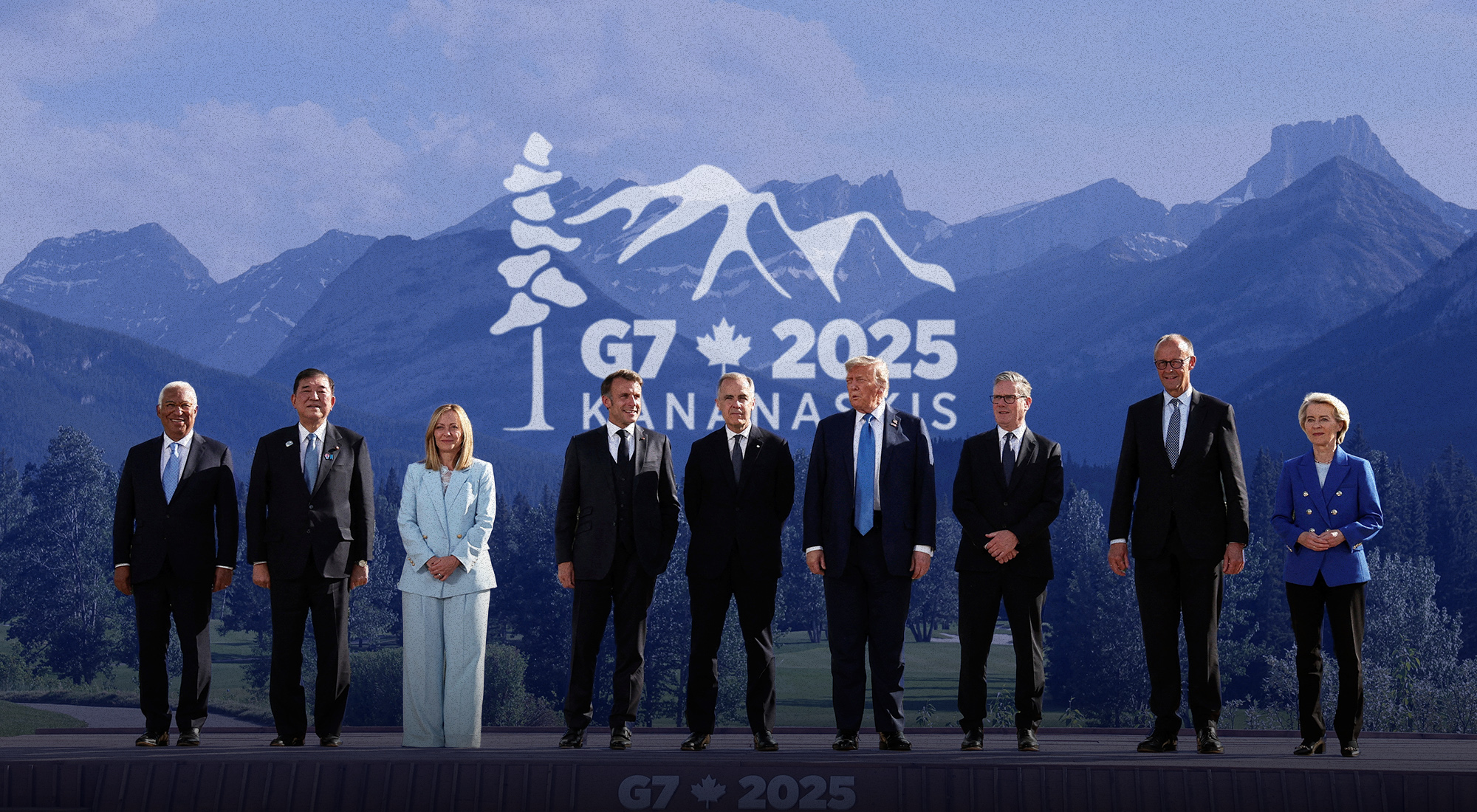The European Union and the United States stand at the forefront of the urgent and complex international discourse over climate change, but their approaches and policies diverge significantly. This article contrasts the impact of climate change on EU countries, European views on the issue, the policies and legislation formulated at the EU level, and the challenges encountered in their implementation with U.S. perspectives on climate change. After a comprehensive analysis, it becomes evident that despite some similarities the EU and the U.S. exhibit significant disparities in their strategies and priorities. Understanding these differences is crucial to fostering cooperation and driving global climate action forward in a cohesive and impactful manner.
The Impact of Climate Change on EU Countries
The EU and its member states are experiencing a wide range of impacts from climate change. In reports such “Climate Change, Impacts, and Vulnerability in Europe,” the European Environment Agency highlights the risks to various European countries and sectors from alterations in weather conditions.[1]
Changes in temperature and precipitation patterns will affect agricultural productivity and food security. Heat stress, droughts, and extreme weather events have damaged crops, reduce yields, and impacted livestock farming. Shifts in growing seasons and the spread of pests and diseases can also pose challenges to the agricultural sector. In Spain, for example, drought conditions and water scarcity have affected agricultural productivity, particularly in regions such as Andalusia and Murcia where reductions in crop yields and shifts in suitable crop areas have been observed.
Ecosystems are also affected by climate change, which disrupts habitats and leads to shifts in species distribution and even endangerment or extinction. The resulting reduction in biodiversity can have cascading effects on an ecosystem’s functions and services. In France, for example, climate change threatens biodiversity in alpine habitats and coastal areas. Rising temperatures have contributed to the retreat of glaciers in the French Alps.
Humans are not immune to the effects of changes in climate. Higher temperatures bring with them an increase in heat-related illnesses and mortality and can expand the geographic range of disease-carrying insects such as ticks and mosquitoes. Air pollution, exacerbated by heatwaves and changing weather patterns, can also have adverse health effects. During the summer of 2007 Italy faced a severe heatwave that lasted for several weeks. The combination of high temperatures and stagnant atmospheric conditions contributed to the formation of high levels of air pollutants, especially in urban areas, and led to an increase in hospital admissions and mortality rates.[2]
Reports have indicated that climate change can have substantial economic implications for European countries. Extreme weather events, such as floods and storms, can cause significant damage to infrastructure, agriculture, and industry. The costs associated with adaptation and mitigation measures as well as the potential loss of revenue from affected sectors has had economic consequences.[3] Another indirect economic cost of climate change is population migration. European governments have been forced to cope with people fleeing places such as Syria, Iraq, and Libya because of drought and water scarcity exacerbated by military conflict. Providing housing, jobs, and medical care for these migrants has been a struggle, especially for countries nearest the Middle East and North Africa such as Greece, Italy, Spain, and Malta.[4]
Views on Climate Change in the EU
Public opinion surveys consistently show that a majority of Europeans view climate change as one of the most pressing global challenges. The Eurobarometer, a series of surveys conducted by the European Commission, regularly assesses public opinion on various topics, including climate change. One survey, conducted in 2019 found that 93% of Europeans consider climate change a serious problem, with 79% considering it a very serious problem. According to a different survey administered in 2018, 85% of Europeans felt personally concerned about climate change, while 92% thought that climate change is a result of human activity[5].
Europeans generally value environmental protection and conservation and often prioritize sustainable practices in their daily lives, such as recycling, energy conservation, and sustainable transportation options. Climate change is seen as interconnected with other environmental challenges, such as biodiversity loss and air pollution, so efforts to combat it often go hand in hand with initiatives to protect ecosystems, promote sustainable agriculture, and reduce pollution levels. Europeans generally support policies that prioritize renewable energy, sustainability, and environmental protection, and there is a growing awareness, particularly among the younger generation, of the importance of climate change mitigation and adaptation.
While there are other challenges facing Europe, climate change remains a priority for the EU and most European citizens who recognize that climate change is a worldwide issue and that their actions can have a positive impact on both the global climate and vulnerable countries and regions. Another aspect of climate change that resonates is that it affects future generations, and can exacerbate other societal challenges.[6]
Increased public awareness, scientific evidence, and activism have raised the profile of the climate change issue. European youth, in particular, have been highly engaged in climate activism and have raised awareness about the urgency of addressing climate change. Fridays for Future, for example, is led by Swedish activist Greta Thunberg and encourages children to skip school on Fridays to demand action by corporations and governments.[7]
While climate change is a concern across Europe, there are some regional variations in views and priorities. Northern European countries, for example, often place a strong emphasis on renewable energy and sustainability, whereas some Eastern European countries have relied heavily on fossil fuels and face unique challenges in transitioning to a low-carbon economy.[8]
Legislative leaders: EU goes all in on climate change
The EU has been at the forefront of global efforts to combat climate change, setting ambitious targets for greenhouse gas emissions reduction, renewable energy, and energy efficiency. The European Green Deal, announced in 2019, outlines the EU’s comprehensive plan to achieve climate neutrality by 2050 and promote sustainable economic growth.
There is broad support among Europeans for renewable energy sources and sustainable practices, with many EU member states investing significantly in renewable energy infrastructure such as wind and solar power. The International Renewable Energy Agency’s 2020 “Country Profiles” report provided an overview of the renewable energy sector and policy landscape in various countries including EU member states.[9] The report noted that Germany, for example, were one of the world’s leading wind energy markets, and had implemented policies and financial incentives to support wind power deployment. The report recognized Italy for its substantial investments in solar power and highlighted the country’s strong policy support and attractive incentives, leading to significant solar photovoltaic capacity installations.
The EU has established a network of protected areas called Natura 2000, covering over 18% of its land and 10% of its marine territory to preserve biodiversity and maintain healthy ecosystems. They also recognize cities and communities that prioritize environmental sustainability, green urban planning, waste reduction, and sustainable transportation with awards such as Green Capitals of Europe and the European Green Leaf Award.
The EU has also declared its commitment to addressing climate change through a range of policies and initiatives aimed at reducing greenhouse gas emissions, promoting renewable energy, and transitioning to a low-carbon economy. The EU decision-making process on climate change involves various institutions and stakeholders. The European Commission is responsible for proposing legislation and policies. It develops climate-related initiatives and presents them to the other EU institutions. The European Parliament, directly elected by EU citizens, participates in the decision-making process by debating and amending proposed legislation on climate change. It shares legislative power with the Council of the EU. The Council of the EU, representing the governments of member states, shares legislative power with the European Parliament. It negotiates and adopts EU laws and policies, including those related to climate change.[10]
The EU consists of 27-member states, each with its own priorities and interests. Member states contribute to shaping climate policies through their representation in the European Council and Council of the EU. Within the European Parliament, specialized committees, such as the Committee on Environment, Public Health and Food Safety, are responsible for analyzing and proposing amendments to climate-related legislation. Various stakeholders, including environmental NGOs, industry associations, and civil society organizations, play an essential role in shaping EU climate policies. They provide input, lobby for their interests, and contribute to public consultations.
The EU has instituted several significant climate-related policies. One key initiative is the EU Emissions Trading System, a cap-and-trade system designed to limit greenhouse gas emissions. It is based on the principle of pricing carbon emissions, thereby creating economic incentives for industries to reduce their emissions.[11] The EU sets an overall cap on the total amount of greenhouse gas emissions allowed for each sector, including power generation, industry, and aviation. This cap decreases over time to ensure emissions reductions. Allowances, also known as permits, are issued to participating industries and installations, who are given a specific amount of greenhouse gases they can emit. The initial allocation of allowances is determined through a combination of free allocation and auctions.
Industries can buy and sell allowances in a carbon market. If an installation emits more greenhouse gases than the number of allowances it holds, it must purchase additional allowances to cover the excess emissions. Conversely, if an installation emits fewer greenhouse gases, it can sell its excess allowances. Participating industries are required to monitor and report their greenhouse gas emissions annually. They must surrender the corresponding number of allowances to match their emissions. Failure to surrender the necessary allowances results in financial penalties.
In essence, the system aims to incentivize emission reductions, encourage low-carbon investments, and promote cost-effective climate change mitigation measures. The trading of allowances creates a market for carbon emissions, which allows for flexibility and cost-effectiveness in achieving emission reductions. It incentivizes industries to invest in cleaner technologies and practices, as reducing emissions can be financially beneficial through the sale of surplus allowances.
The Renewable Energy Directive (RED), implemented in 2009, is another cornerstone initiative established by the EU to promote the use of renewable energy sources, reduce greenhouse gas emissions and foster energy security and independence.[12] The directive assigns a binding individual target to each member state based on their specific potential and starting point. The overall goal is to achieve a 32% share of renewable energy in the EU’s gross final energy consumption by 2030. A system of Guarantees of Origin (GO) track and verify the origin and environmental characteristics of renewable energy, certifying that a certain amount of energy was produced from renewable sources. Member states that fail to meet their renewable energy targets may face penalties and sanctions imposed by the European Commission. These measures aim to ensure that countries make sufficient efforts to increase the share of renewable energy in their energy mix. However, the transposition process of the Renewable Energy Communities rules across the EU reveals significant variations in their implementation due to geographic, cultural, economic, and political factors, indicating a lack of uniformity despite the initiative’s common framework.
Another way the EU is attempting to make life “greener” is by encouraging reductions in the use of energy. The Energy Efficiency Directive (EED), implemented in 2012, assigns member states binding targets with the overall goal being a 32.5% energy reduction across the continent by 2030. Member states are required to establish energy efficiency obligation schemes or alternative measures to ensure that energy distributors or retail energy sales companies achieve annual energy savings.[13] These obligations aim to promote energy efficiency measures in households and businesses. The EED promotes the deployment of individual meters for heating, cooling, and hot water in multi-apartment and multi-purpose buildings. It aims to provide consumers with more detailed information on their energy consumption, enabling them to make informed decisions and take measures to improve efficiency. The directive also emphasizes the importance of energy efficiency in the public sector and encourages governments to lead by example and take measures to improve the energy efficiency of public buildings and facilities. Member states that fail to meet their energy savings targets may face penalties and sanctions imposed by the European Commission.
Introduced by the European Commission in 2019, the European Green Deal’s ambitious objective is to transform the continent into a climate-neutral, sustainable, and resilient economy by 2050. The plan emphasizes a transition to a circular economy, where resources are used efficiently, waste is minimized, and materials are reused or recycled. This movement away from the current system will displace workers, and the Green Deal addresses this concern with provisions to support workers with opportunities for reskilling and job creation.[14] To fund their program, the EU will attempt to attract public and private investments through the European Investment Bank, Invest EU, the Just Transition Mechanism as well global investors. The Green Deal explicitly calls for international cooperation as climate change does not exist in a vacuum; what happens in one part of the world affects other areas. Climate change is a global issue that requires international cooperation and coordination.[15]
Transforming the transportation sector is also a goal of the initiative, which recommends the promotion of sustainable mobility options such as electric vehicles, public transport, and cycling. To accomplish this the Green Deal will invest in alternative fuels and city infrastructure such as bike paths with the goal of decarbonizing the aviation and shipping industries
In line with the EED, the Green Deal will also focus on improving the energy efficiency of buildings through renovations and retrofits. It aims to promote energy-efficient technologies, reduce energy consumption, and enhance the sustainability of the built environment.[16]
Climate change and the economy: In the EU nest, many mouths to feed
The EU consists of member states with diverse economic structures, energy sources, and priorities. Reaching consensus on climate policies will be challenging, as different countries have concerns about economic competitiveness and are dependent on specific industries. Balancing these diverse interests while maintaining a unified approach to climate action will require the involvement of many stakeholders, which will make the decision-making process more complex and time-consuming. This complexity may lead to challenges in reaching timely agreements and implementing coherent policies.[17]
Shifting towards a low-carbon economy also requires significant investments, technological advancements, and changes in various sectors. The EU faces challenges in coordinating and facilitating this transition across member states, particularly in sectors such as energy, transportation, and industry. Striking a balance between environmental goals and maintaining economic growth and competitiveness is a constant challenge.
The EU’s energy mix includes a mix of fossil fuels, renewable energy, and nuclear power. Reducing the continent’s dependence on fossil fuels and transitioning to renewable energy sources is a priority for climate action. However, this transition can be impeded by issues such as infrastructure limitations, political considerations, and concerns related to energy security and affordability.[18]
Regarding politics, the EU, will have to coordinate across different levels of governance, including EU institutions and member states, to ensure the effective implementation and enforcement of their climate-related regulations. The EU will also have to engage with other major emitters, such as the U.S., China, and India. Ensuring a level playing field and avoiding carbon leakage, where industries move to regions with less stringent climate regulations, is a persistent concern.[19]
Lastly, gaining public support and fostering social acceptance for climate policies is crucial for their successful implementation. The EU faces challenges in effectively communicating the urgency and importance of climate action.
The Impact of Climate Change in the U.S.
Over the past 50 years, temperatures in the U.S. had warmed nearly 68% faster compared to the world at large, increasing by 1.4 degrees Celsius, above preindustrial levels.[20] Rising temperatures, increased flooding, and extreme drought impact existing vulnerabilities in communities. Smog and wildfires compromise air-quality and increase health risks, threatening the lives of vulnerable, low-income populations who lack access to affordable healthcare.
In the eastern Atlantic and Gulf coasts, rising sea levels have resulted in chronic tidal flooding, also known as nuisance or sunny day floods. Tidal flooding occurs when rising sea levels merge with local factors such as variations in wind patterns, shifts in ocean currents, or strong tidal forces brought on by a new moon. The combination of unrelated factors results in an overflow of water in low-lying coastal neighbourhoods.
The frequency of tidal flooding events has increased five- to 10-fold since the 1950s, leaving coastal cities vulnerable to uncontrollable submersion of city streets resulting in millions of dollars in damages. Besides increasing pressure on coastal drainage systems, tidal flooding has forced residents to relocate inland, rebuild altogether, or elevate structures above-ground, an expensive remodel most cannot afford. From 1990 to 2009, the city of Boston experienced on average of four flood events per year with occurrences soaring to 14 per annum from 2010 to 2020.[21] Similar upsurges were witnessed in the city of Bay St. Louis, Mississippi which encountered three days of high-tide flooding in 2000, increasing to 22 days in 2020.[22]
Since the 1850s sea levels in New York City, which has more than 500 miles of shoreline, have risen 18 inches, and could increase by another six feet by the year 2100.[23] City planners are altering their approach towards infrastructure and design to help lessen the impact future flooding could have on the city. Options being considered include the construction of flood walls, the restoration of shoreline habitats, and the use of porous materials that absorb water and release it back into the ground such as permeable pavement.[24]
The increased frequency of unexpected flooding could have an impact on coastal economies, and especially the real estate sector. Property values might decrease and already expensive insurance premiums increase. An increase in natural disasters pegged with growing inflation forced a 12.1% increase in homeowner insurance premiums in 2022, compared to a year prior.[25] Agriculture often experiences the harshest economic impacts related to flooding and extreme weather conditions, as they impact crop yields, disrupt fisheries, and undermine food supply chains. All of these affect employment opportunities for local communities.
Naturally occurring wildfires can benefit an ecosystem by eliminating dead organic materials and eliminate diseases and harmful insects. Smaller, controlled fires actually help to prevent large blazes from occurring as they remove dry debris including shrubs, logs, or leaves, all effective forms of potential fodder. In the last 50 years, however, California’s summer-season wildfires have increased nearly 800 percent in size.[26]
As a result of increasing temperatures and reduced precipitation, California is currently experiencing its driest 22-year period in more than 1,200 years.[27] Drought, paired with record high heat waves, increased atmospheric pressure, and tinder-dry conditions create the ideal environment for one little spark, including those brought on by human error, to ignite large-scale forest fires. Such conditions have led to a decline in vegetation, creating conditions ideal for a forest fire spark. Between 2010 to 2018, over 147 million trees died in California and that has contributed to the fodder needed to fuel large-scale infernos.[28]
The green agenda in the red, white and blue
According to a recent Pew Research poll, nearly seven in 10 American’s (69%) support the U.S. working towards carbon neutrality by 2050. 69% also favour prioritizing the development of renewable resources over the expansion of fossil fuels,[29] signaling that most Americans are receptive to a cleaner energy future than ever before. A closer breakdown of the data, however, shows that political orientation continues to divide America’s perception on today’s climate crisis. While nine in 10 Democrats support carbon neutrality by 2050, less than half of Republicans polled (44%) support such goals. Similarly, when asked whether climate change is a threat to the country’s well-being, 78% of Democrats believe climate change is a major threat to the country verses 23% of Republicans. A little over a third of the country (37%) view climate change as a top priority, ranking 17th out of 21 national issues, with strengthening the economy ranking as the most important concern at 75%, according to a recent Pew Research Center poll.[30]
The media also plays a major role in shaping public opinion on climate change. In today’s fast pace, 24-hour news cycle, the media has often underreported the causes and impacts of climate change. However, when climate change is given airtime or print space, media outlets often present their own biases and relay information that aligns with their target audience’s views. Media framing can shape public perception by emphasizing certain aspects of the issue, such as economic impacts or scientific consensus. The conservative news channel, Fox News for example refers to climate change as a “leftist political agenda,” or the “the religion of the Left,” whereas more center, or left-leaning news networks such as MSNBC or CNN tend to refer to climate change as a “climate crisis.”[31] Such biases can influence viewer perceptions and potentially reinforce existing beliefs or create doubt about the severity of the issue.
Personal economic conditions can also shape public opinion on climate change, especially for those who are employed in industries associated with fossil fuels. During the 2016 presidential cycle, former President Trump campaigned on “ending the war on coal[32],” promising to bring back coal jobs following the Obama Administrations implementation of environmental regulations which caused a gradual decline of American’s reliance on coal-powered energy plants. From 2011 and 2016, 697 coal mines were closed as a result of declining demand for coal-fired power, resulting in nearly 40,000 jobs lost.[33] Coal miners, and many of whom who work blue-collar jobs in the oil and gas sector remain hesitant about a clean energy transition, as this means their jobs and health insurance could be in jeopardy. Unlike other skilled labour who can translate their knowhow to the renewable sector, coal miners are less likely to find employment on wind and solar farms that would be applicable to their work experience.[34] Politicians have historically attempted to appeal to the economic interests of the blue-collar working class who often reside in swing states, which can make-or-break an election, even if it means playing up campaign rhetoric on resuscitating the failing coal industry that currently produces a fifth of greenhouse gas emissions, more than any other single source.[35]
In Congress, the conversation on climate is changing. In 2016, the bipartisan Climate Solutions Caucus was formed to address climate issues while strengthening American competitiveness and international leadership on environmental issues. In 2018, House Republican Carlos Curbelo introduced the Market Choice Act which proposed a tax on fossil fuel greenhouse gas emissions which would have been deposited into a trust fund, providing grants for low-income households and funds for environmental research projects. Although the proposed legislation did not gain enough traction for a vote, the bill was updated and re-introduced in 2021 to include the establishment of a National Climate Commission to review policies to reduce greenhouse gas emissions. The bill is currently being considered by the Subcommittee on Energy and Mineral Resources. Another example of Republicans becoming more active in environmental legislation was Congressman Theodore Deutch’s Energy Innovation and Carbon Dividend Act. The bill, introduced in 2021, proposed fees on the carbon content of fuels, including crude oil, natural gas, or coal. While such legislation makes pollution more expensive, it does not altogether eliminate the use of fossil fuels, and ultimately leads to higher prices for consumers.
Biden’s legislative legacy: A sea change of green investment
President Joe Biden signed an executive order in December 2021 that affirmed the U.S. would commit to becoming a net-zero contributor, achieving a carbon pollution-free electricity sector by 2035 and a net-zero emissions economy by 2050. In order to achieve such ambitious goals, a rapid deployment of emission reduction and clean energy initiatives were needed to guarantee a decline of more than 6% of emissions each year to hit the 2050 target.
In August of 2022, President Biden signed into law the landmark Inflation Reduction Act (IRA). Although it has not reduced inflation, the bill did include a $370 billion investment towards climate and clean energy programs — the largest federal investment in history to combat climate change. The IRA includes a package of investments, subsidies, grants, and loan guarantee programs intended to help keep the cost of climate energy technologies affordable for both consumers and businesses with the aim to reduce carbon emissions by 40% by 2030.[36] Nearly $200 billion has been invested in 126 clean energy projects in 33 states.[37] The IRA’s tax incentives were a deliberate approach to encourage investment and development of the renewable energy sector. The law also aims to incentivize energy efficient building upgrades and the purchase of domestically produced electric vehicles.
Funded by changes to the current tax code, the IRA increases taxes for wealthy Americans and corporations whose income exceeds $400,000 a year, a point of contention among Republicans. In April 2023, the House GOP voted in-line to rescind many of the IRA’s clean energy tax incentives in exchange for a temporary increase in the federal debt limit.[38] The Republican-led bill is expected to be “dead-on-arrival” upon reaching the Democrat-controlled Senate. President Biden also signaled any such legislation to reach his desk would be vetoed.[39]
In an attempt to sway public opinion in middle-America, Biden touted the economic benefits of the IRA during his State of the Union Address this past February, stating the national clean energy legislation will help to lower monthly utility bills, boost employment, and lead the world to a clean future.[40]
From August 2022 to January of 2023, the Inflation Reduction Act has created nearly 110,000 new jobs as a result of $193.3 billion in clean energy investment projects. Announced projects include 24 new (or expanded) Electric Vehicle manufacturing facilities, 49 new battery manufacturing sites, and 22 plans to expand wind and solar manufacturing.[41]
The climate change divide in the U.S.
Many members of the U.S. electorate deny that we are in a climate crisis. They believe that claims of catastrophe are overblown and do not take into account human adaptation and ingenuity.[42] Following former President Trump’s election win in 2016, climate discussions became further polarized after he asserted that climate change was a “hoax”[43] invented by the Chinese to make U.S. manufacturing less competitive. Others argue that the policies pushed by climate activists are economic suicide and would destroy many sectors, including the energy sector. In 2022, Senator Lindsey Graham, a Republican from South Carolina told reporters, “I don’t want to be lectured about what we need to do to destroy our economy in the name of climate change.”[44] A core tenant of Republican ideology remains limited government, meaning less regulations and minimal intervention of the economy, especially energy markets.
Following the Biden Administration’s decision to expand the moratorium on oil and gas leases for federal lands and water, 29 Republican lawmakers released a joint statement denouncing the decision, claiming the pause would “negatively impact the economies, jobs, and local communities of rural America while threatening America’s energy security.”[45] In response, the non-profit consumer advocacy group, Public Citizen discovered that over the course of their careers, all 29 members had received a combined $13.4 million in campaign donations from the oil and gas lobby and $23.6 million from energy and natural resources lobby.[46] Current Speaker of the House, Kevin McCarthy ranked first among the group in campaign contributions, receiving almost $6 million throughout his career from energy interests.
The act of lobbying the U.S. federal government dates back to the 1800s with one of the first instances involving Samuel Colt, maker of the Colt .45 handgun who distributed firearms to lawmakers in an attempt to extend his patent.[47] Today, the energy lobby is one of the most influential players in Washington D.C. with spending in 2022 reaching $125 million.[48] Considering Republicans have historically championed climate crisis-denial rhetoric on the campaign trail, during election cycles Republican candidates have received up to seven times more in donations compared to Democrats running for office. During the 2020 Presidential election season, former President Trump took in $3.7 million from the oil and gas lobby, compared to the $1.6 million donated to President Biden’s campaign.[49]
In 2021, Keith McCoy, a senior Exxon Mobil lobbyist was caught on video admitting the company had aggressively fought against climate science, stating that there was nothing illegal about Exxon’s efforts, and rather the company was interested in protecting its investments and those of its shareholders. In the same year, Exxon spent $6.8 million on lobbying expenditures.[50] While lobbying the U.S. government is a protected right under the first Amendment, the power these groups wield has the ability to influence the perceptions of climate change by creating doubt and confusion about global warming. In addition to influencing potential legislation in their favour, lobby groups also work to undermine the credibility of climate scientists by questioning their expertise, affiliations, or funding sources. They might highlight perceived conflicts of interest or make accusations of bias to cast doubt on the scientific consensus. Lobby groups selectively present scientific studies or data that support their preferred narrative while ignoring or downplaying the overwhelming body of evidence supporting anthropogenic climate change. They may focus on isolated uncertainties or outliers, amplifying them to create the perception of scientific disagreement.
When it comes to climate change, there’s an ocean between the EU and the U.S.
The EU has established a comprehensive and coordinated policy framework to address climate change. It has set binding targets for emissions reductions, renewable energy deployment, and energy efficiency improvements through legislation such as the EU Emissions Trading System, Renewable Energy Directive (RED), and Energy Efficiency Directive (EED). The EU’s approach emphasizes regulatory measures and market-based mechanisms to drive climate action. The U.S., on the other hand, has historically employed a mix of federal regulations, subsidies, and voluntary initiatives, with varying levels of ambition depending on the political climate and priorities of different administrations.
At the forefront of international climate action and a key driver in global climate negotiations, the EU played a crucial role in the development and adoption of the Paris Agreement, a global climate accord aimed at limiting global warming to well below two degrees Celsius. The EU has committed to becoming climate-neutral by 2050. In contrast, the U.S. has experienced policy shifts under different administrations. While the U.S. signed the Paris Agreement, it withdrew during the Trump administration. While some U.S. administrations have been more proactive on climate change, others have taken a more skeptical or less proactive stance.[51]
The EU has set ambitious emissions reduction targets. It aims to achieve at least a 55% reduction in greenhouse gas emissions by 2030 compared to 1990 levels. The EU also has a long-term objective of becoming climate-neutral by 2050. The U.S. has historically adopted varying emissions reduction targets, with the Obama administration aiming for a 26-28% reduction below 2005 levels by 2025. The Biden administration has set a more ambitious target of reducing emissions by 50-52% below 2005 levels by 2030.[52] The EU has also implemented policies to drive the deployment of renewable energy sources. RED sets binding targets for the share of renewable energy in the EU’s total energy consumption. The EU has made significant progress in increasing renewable energy generation, particularly from wind and solar sources. In comparison, the U.S. has had a more fragmented approach, with renewable energy deployment varying across states. However, there is growing momentum in the U.S. to expand renewable energy, driven by falling costs and state-level initiatives.
As opposed to the U.S., which has subnational entities such as states and cities that play a significant role in climate action, the EU operates as a supranational entity, where member states implement EU-wide policies and directives. The EU provides a framework for coordination and harmonization across member states. Several U.S. states have adopted ambitious emissions reduction targets and implemented policies, such as renewable portfolio standards and carbon pricing, independently of federal actions.[53]
Conclusion
Whether throughout the EU, or within the U.S., no geographical region or sector is spared from the adverse effects of climate change. Considering the vast landmass of the EU and the U.S., both remain subject to a spectrum of climate-induced extreme weather conditions, from flooding in certain regions, to extreme heat and droughts elsewhere. Such complexity creates widespread economic implications — especially within agricultural sectors. Likewise, the severe impacts of climate change can have lasting impacts on ecosystems and can increase the risk of worsening health issues, especially for lower-income communities. In addition to continually working towards lowering greenhouse gas emissions, adaptation strategies and resilience-building measures will remain central for both the EU and the U.S. government to safeguard the lives and livelihoods of their citizens.
The EU has long remained at the forefront of global efforts to combat climate change. While the U.S. has made recent strides to prioritize climate action and carbon neutrality, the major congruence between the two lies in public opinion, with Europeans consistently more engaged and open to climate action and investments. Americans are generally less concerned about the impact climate change will have on their daily lives, compared to European society. Americans consider global warming overall a low priority compared to other pressing issues such as inflation or the rising costs of healthcare.
Both the EU and the U.S. have recently implemented critical climate legislation to tackle climate change and encourage growth within the renewable energy sectors. As the EU continues to set its sights on long-term climate and emission reduction objectives, the U.S. might be subject to setbacks if future lawmakers, presidents, or the energy lobby decide to roll-back climate policy that does not suit their political agendas.
References
[1] European Environment Agency, “Climate Change, Impacts and Vulnerability in Europe 2016: An Indicator-based Report,” EEA Report No. 1/2017, Retrieved from https://www.eea.europa.eu/publications/climate-change-impacts-and-vulnerability-2016
[2] Ertug Ercin, Ted I.E. Veldkamp and Johannes Hunink, “Cross-border climate vulnerabilities of the European Union to drought,” Nature Communications, 12, Article no. 3322 (2021), https://doi.org/10.1038/s41467-021-23584-0.
[3] David García-León, Ana Casanueva, Gabriele Standardi, Annkatrin Burgstall, Andreas D. Flouris and Lars Nybo, “Current and projected regional economic impacts of heatwaves in Europe,” Nature Communications 12, Article no. 5807 (2021), https://doi: 10.1038/s41467-021-26050-z.
[4] Ibrahim Özdemir, “The climate refugee crisis is landing on Europe’s shores — and we are far from ready,” Politico, February 20, 2023, https://www.politico.eu/article/climate-refugee-crisis-europe-policy/
[5] Eurobarometer (2021) ‘EU-Climate Change’, https://europa.eu/eurobarometer/surveys/detail/2273
[6] Aaron M. McCright, Riley E. Dunlap and Sandra T. Marquart-Pyatt, “Political ideology and views about climate change in the European Union,” Environmental Politics, vol. 25 no. 2 (2016), pp. 338-358, DOI: 10.1080/09644016.2015.1090371
[7] Donatella Baiardi and Claudio Morana, “Climate change awareness: Empirical evidence for the European Union,” No. 426, EconPapers, University of Milano-Bicocca, Department of Economics, 2021, https://EconPapers.repec.org/RePEc:mib:wpaper:426
[8] Neil Carter, Conor Little and Diarmuid Torney, “Introduction: Climate politics in Small European States,” in: Neil Carter, Conor Little, Diarmuid Torney eds., Climate Politics in Small European States (Routledge: 2021).
[9] IRENA, “Country Profiles,” 2022, https://www.irena.org/Data/View-data-by-topic/Renewable-Energy-Balances/Country-Profiles
[10] John Vogler, “Global Climate Politics: Can the EU be an Actor?” in: Rüdiger K.W. Wurzel, James Connelly, Duncan Liefferink eds, The European Union in International Climate Change Politics. Still Taking a Lead? (Routledge: 2017)
[11] Antoine Dechezleprêtre, Daniel Nachtigall and Frank Venmans, “The joint impact of the European Union emissions trading system on carbon emissions and economic performance,” Journal of Environmental Economics and Management, Volume 118 (2023).
[12] Christina E. Hoicka, Jens Lowitzsch, Marie Claire Brisbois, Ankit Kumar and Luis Ramirez Camargo, “Implementing a just renewable energy transition: Policy advice for transposing the new European rules for renewable energy communities,” Energy Policy, Volume 155, Article no. 112435 (2021).
[13] Edwin Woerdman, Martha Roggenkamp, and Marijn Holwerda, “EU climate law and energy network regulation,” in: Edwin Woerdman et al, eds. Essential EU Climate Law 2nd edition CK
(Edward Elgar Publishing: 2021), pp. 207–236.
[14] Simon Schunz, “The ‘European Green Deal’ – a paradigm shift? Transformations in the European Union’s sustainability meta-discourse,” Political Research Exchange, Vol. 4, no.1 (2022), DOI: 10.1080/2474736X.2022.2085121
[15] Herold, A., et al., ‘EU Environment and Climate Change Policies – State of play, current and future challenges’, Study for the Committee on the Environment, Public Health and Food Safety., Policy Department for Economic, Scientific and Quality of Life Policies, European Parliament, Luxembourg, 2019
[16] Cifuentes-Faura J. “European Union policies and their role in combating climate change over the years,” Air Qual Atmos Health, Vol. 15, No. 8 (2022), pp. 1333-1340, doi: 10.1007/s11869-022-01156-5.
[17] Heather Grabbe and Stefan Lehne, “Climate Politics in a Fragmented Europe,” Carnegie Endowment for International Peace, 2019, https://carnegieeurope.eu/2019/12/18/climate-politics-in-fragmented-europe-pub-80616
[18] Jordan, A., Huitema, D., Rayner, T., & Van Asselt, H., “Governing the European Union: Policy choices and governance dilemmas,” in: A. Jordan, D. Huitema, H. Van Asselt, T. Rayner, & F. Berkhout (Eds.), Climate Change Policy in the European Union: Confronting the Dilemmas of Mitigation and Adaptation? (Cambridge: Cambridge University Press 2010), (pp. 29-51).
[19] Thobias Gehrke, “Strategy and risk: How to make the Green Deal Industrial Plan a geoeconomic success,” The European Council on Foreign Relations, 2023
[20] Brady Dennis, Chris Mooney and Steven Mufson, “Climate change threatening ‘things Americans value most,’ U.S. report says,” The Washington Post, https://www.washingtonpost.com/climate-environment/2022/11/07/cop27-climate-change-report-us/
[21] United States Environmental Protection Agency, “Climate Change Indicators: Coastal Flooding,” Date retrieved, June 12, 2023, https://www.epa.gov/climate-indicators/climate-change-indicators-coastal-flooding
[22] Renee Collini, “High-tide flood risk is accelerating, putting coastal economies at risk,” The Conversation, July 14, 2021, https://theconversation.com/high-tide-flood-risk-is-accelerating-putting-coastal-economies-at-risk-164481
[23] City of New York, “Chronic Tidal Flooding,” NYC Mayor’s Office of Climate and Environmental Justice, Date retrieved, June 12, 2023, https://climate.cityofnewyork.us/challenges/chronic-tidal-flooding/
[24] Museum of the City of New York, “Rising Sea Levels and New York City,” Date retrieved, June 12, 2023, https://www.mcny.org/education/rising-sea-levels-and-new-york-city
[25] Pat Howard, “Home insurance prices are rising even faster than inflation,” Policy Genius, July 12, 2022, https://www.policygenius.com/homeowners-insurance/home-insurance-pricing-report-july-2022/
[26] Robinson Meyer, “California’s Wildfires Are 500 Percent Larger Due to Climate Change,” The Atlantic, July 16, 2019, https://www.theatlantic.com/science/archive/2019/07/climate-change-500-percent-increase-california-wildfires/594016/
[27] Sean Greene and Thomas Suh Lauder, “Tracking California’s water supplies,” The Los Angeles Times, June 8, 2023, https://www.latimes.com/projects/california-drought-status-maps-water-usage/#:~:text=How%20dry%20is%20California%3F,in%20more%20than%201%2C200%20years.
[28] Kayanna Warren, “California Tree Mortality Numbers Released: 18 Million Trees Died In 2018,” U.S. Department of Agriculture, Forest Service, Date retrieved, June 13, 2023.
[29] Alec Tyson, Cary Funk, and Brian Kennedy, “What the data says about Americans’ views of climate change,” Pew Research Center, April 18, 2023, https://www.pewresearch.org/short-reads/2023/04/18/for-earth-day-key-facts-about-americans-views-of-climate-change-and-renewable-energy/#:~:text=Overall%2C%2037%25%20of%20Americans%20say,a%20Center%20survey%20from%20January
[30] Pew Research Center, “Economy Remains the Public’s Top Policy Priority; COVID-19 Concerns Decline Again,” February 6, 2023, https://www.pewresearch.org/politics/2023/02/06/economy-remains-the-publics-top-policy-priority-covid-19-concerns-decline-again/
[31] Grace McMeekin, “Influencing Audience Perceptions: How Fox News, CNN & MSNBC Portray Climate Change in 2019,” Elon Journal of Undergraduate Research in Communications, Vol. 11, No. 1, Spring 2020, https://eloncdn.blob.core.windows.net/eu3/sites/153/2020/06/09-McMeekin.pdf
[32] Eric Lipton, “ ‘The Coal Industry Is Back,’ Trump Proclaimed It Wasn’t,” The New York Times, October 5, 2020, https://www.nytimes.com/2020/10/05/us/politics/trump-coal-industry.html
[33] Florian Egli, “Backlash to fossil fuel phase-outs: the case of coal mining in US presidential elections,” IOP Science, August 17, 2022, https://iopscience.iop.org/article/10.1088/1748-9326/ac82fe/pdf
[34] Noam Scheiber, “The Achilles’ Heel of Biden’s Climate Plan? Coal Miners,” The New York Times, December 28, 2021, https://www.nytimes.com/2021/12/08/business/economy/coal-miners-unions-climate.html
[35] Fatih Birol and David Malpass, “It’s critical to tackle coal emissions,” International Energy Agency, October 5, 2021, https://www.iea.org/commentaries/it-s-critical-to-tackle-coal-emissions
[36] International Energy Agency, “Inflation Reduction Act 2022,” Sec. 60113 and Sec. 50263 on Methane Emissions Reductions, November 8, 2023, https://www.iea.org/policies/16317-inflation-reduction-act-2022-sec-60113-and-sec-50263-on-methane-emissions-reductions
[37] Eli Stokols, “How the climate movement learned to win in Washington,” Politico, April 2, 2023, https://www.politico.com/news/2023/04/02/climate-politics-change-00088107
[38] John Buhl, “House GOP Plan To Repeal IRA Incentives Would Hike Taxes For Households, Tilted Toward High-Income Earners,” Tax Policy Center: Urban Institute & Brookings Institution, May 3, 2023, https://www.taxpolicycenter.org/taxvox/house-gop-plan-repeal-ira-incentives-would-hike-taxes-households-tilted-toward-high-income
[39] Scott Wong, Sahil Kapur, and Alexandra Bacallao, “GOP-led House passes bill to hike debt limit and slash spending,” NBC News, April 26, 2023, https://www.nbcnews.com/politics/congress/house-republicans-eye-wednesday-vote-debt-limit-bill-making-changes-rcna81326
[40] “Remarks of President Joe Biden — State of the Union Address as Prepared for Delivery,” The White House, February 7, 2023, https://www.whitehouse.gov/briefing-room/speeches-remarks/2023/02/07/remarks-of-president-joe-biden-state-of-the-union-address-as-prepared-for-delivery/
[41] Climate Power, “Clean Energy Boom Report,” March 31, 2023, https://climatepower.us/wp-content/uploads/sites/23/2023/03/Clean-Energy-Boom-100K-Report.pdf
[42] Michael Schellenberger, “Why Apocalyptic Claims about Climate Change Are Wrong,” Forbes, November 25, 2019, https://www.forbes.com/sites/michaelshellenberger/2019/11/25/why-everything-they-say-about-climate-change-is-wrong/?sh=7e75936e12d6
[43] Edward Wong, “Trump Has Called Climate Change a Chinese Hoax. Beijing Says It Is Anything But,” The New York Times, November 18, 2016, https://www.nytimes.com/2016/11/19/world/asia/china-trump-climate-change.html
[44] Lisa Friedman and Jonathan Weisman, “Delay as the New Denial: The Latest Republican Tactic to Block Climate Action,” The New York Times, July 27, 2022, https://www.nytimes.com/2022/07/20/us/politics/climate-change-republicans-delay.html?searchResultPosition=14
[45] “Western Caucus Members Condemn Biden’s Expansion of Oil & Gas Moratorium” Congressional Western Caucus, January 27, 2021, https://westerncaucus.house.gov/news/documentsingle.aspx?DocumentID=3455
[46] Alan Zibel, “Big Oil’s Capitol Hill Allies: Oil-Funded Lawmakers Resist Biden’s Energy and Climate Plans,” Public Citizen, February 10, 2021, https://www.citizen.org/article/big-oils-capitol-hill-allies/
[47] “Lobby Timeline,” Open Secrets, Date retrieved, June 18, 2023, https://www.opensecrets.org/resources/learn/lobbying_timeline.php
[48] Julianne Geiger, “Oil, Gas Industry Sees Lobby Spending Dip In 2022,” Oil Price, February 23, 2023, https://oilprice.com/Latest-Energy-News/World-News/Oil-Gas-Industry-Sees-Lobby-Spending-Dip-In-2022.html
[49] Statista, “Largest recipient of campaign donations by oil & gas companies in the United States in the 2019/20 election cycle,” June 18, 2023, https://www.statista.com/statistics/1179621/us-oil-and-gas-industry-campaign-donations/
[50] Open Secrets “Client Profile: Exxon Mobil,” Date retrieved, June 18, 2023, https://www.opensecrets.org/federal-lobbying/clients/summary?cycle=2021&id=d000000129
[51] Francesco Francioni and Christine Bakker “The Evolution of the Global Environmental System: Trends and Prospects in the EU and the US”, in: Christine Bakker and Francesco Francioni eds, The EU, the US and Global Climate Governance (London; Routledge, 2016) pp. 9-40
[52]Juan-Carlos Ciscar, James Rising, Robert E. Kopp, and Luc Feyen, “Assessing future climate change impacts in the EU and the USA: insights and lessons from two continental-scale projects,” Environmental Research Letters, Volume 14, Number 8 (2019), https://iopscience.iop.org/article/10.1088/1748-9326/ab281e/meta
[53]Sophia Kalantzakos, The EU, US and China Tackling Climate Change Policies and Alliances for the Anthropocene (London; Routledge: Taylor & Francis, 2017)











